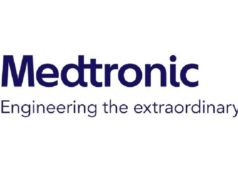
A new probe that performs two types of spectroscopy could make deep brain stimulation (DBS) procedures safer and improve success rates by helping doctors more accurately navigate instruments inside the brain in patients with advanced Parkinson’s disease.
The research team involved identified white and grey matter using principal component analysis (PCA), proving that spectroscopic measurements could be suitable for neuronavigation.
Mireille Quémener (CERVO Brain Research Center, Université Laval, Québec City, Canada) will detail this new research in a presentation at Optica’s Biophotonics congress (23–27 April, Vancouver, Canada).
“Improving neurosurgical guidance for the DBS electrode insertion would streamline the surgical process, decrease the surgery time, reduce the overall health treatment cost and prevent adverse neuropsychological consequences,” said Quémener.
While DBS therapies are becoming increasingly common and can be “remarkably effective” for patients who no longer benefit from available medications, placement of an electrode in the wrong spot by a surgeon can reduce its effectiveness and lead to psychological disorders, as per a press release from Optica—a society dedicated to globally promoting the generation, application, archiving and dissemination of knowledge in the fields of optics and photonics.
DBS is a two-part procedure, including one surgery to place electrodes in specific parts of the brain and a second surgery to implant a battery pack that delivers electrical current to the electrodes. For the first procedure, doctors typically rely on pre-surgery magnetic resonance imaging (MRI) scans to plan where they will insert electrodes. However, this can sometimes lead to an inaccurate placement, as the brain can shift by up to 2mm during the process of drilling an access hole through the skull.
In the present project, researchers created a DBS electrode that is enhanced with an optical probe to perform coherent anti-Stokes Raman scattering spectroscopy (CARS) and diffuse reflectance spectroscopy (DRS) on brain tissues during the insertion process. The probe fits within the DBS electrode and contains two fibres for CARS and DRS illumination, and a third fibre for collecting the signals. Once the electrode reaches the target position, the optical probe can be deployed while the electrode stays in place.
To test the new probe, a neurosurgeon used it to implant electrodes in six regions of the brain of a human cadaver. CARS and DRS measurements were collected along a total length of 50mm in each of the brain’s two hemispheres. After the procedure, researchers extracted the brain and visually identified the white and grey matter through which the probe had passed.
Comparing the readouts from the CARS and DRS measurements to the visual record of brain structures, the researchers found the CARS and DRS methods identified brain tissue with great accuracy—confirming, in their view, that spectroscopy could be a useful tool to help neurosurgeons navigate the brain.
The researchers plan to study whether the approach could be used to collect even more detailed spectroscopic information; for example, to measure neurotransmitters that provide a chemical signature of brain activity.
“Our team is currently working on adapting the optical probe to use it in clinical trials for patients who will receive a DBS surgery,” Quémener stated. “We are convinced that optical methods have enormous potential for surgical guidance, and hope that our technology will emerge in the clinic to assist surgeons in various brain procedures.”












